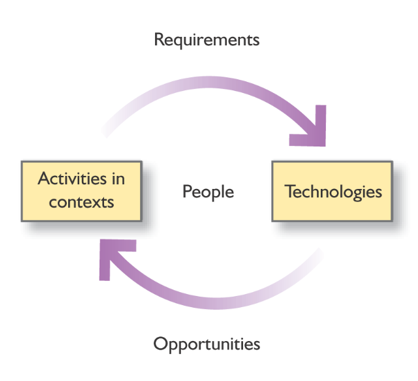Humanoid Robot
For the purpose of helping people with dementia, our group chooses to use the Nao robot. A key part of using the Nao is the extensive framework around the robot which allows for rapid prototyping due to its high level of programmability. This is valuable in the context of this project as the focus here is on using the Social-Cognitive Engineering framework to iteratively build a system to shape human-robot interaction. The three main components of the SCE framework are Foundation, Specification and Evaluation and each addresses its own values for building a strong human-robot partnership (Neerincx et al., 2019).
The technology aspect addressed here is part of the Foundation component of the SCE framework. In the light of the PACT framework, the technology used should support the people (P), which in our case are people with dementia, in certain activities (A) in a specific context (C) (Benyon, 2019). The main context in our case is the house of a PwD where they can be self-sufficient. We choose the Nao over the Pepper robot due to its smaller size which could be beneficial in private houses. This illustrates how the context (private home) can affect the technological choices made within the SCE framework using PACT analysis. The refinement of the requirements of the robot based on the context and the technology itself is at the core of the iterative process utilised in this work. This is depicted by the figure below, emphasising that the activities in a certain context effects the technology and that the technology in turn affects the activities in the context by providing opportunities. In our case the opportunities are shaped by the functionality of the Nao which can be speech recognition and facial detection. Central to this are the people for we aim to build a human-robot partnership to help them with their needs.

Based on Carroll (2002), Figure 3.1 , p. 68
- Neerincx, M., van Vught, W., Blanson Henkemans, O., Oleari, E., Broekens, J., & Peters, R. et al. (2019). Socio-Cognitive Engineering of a Robotic Partner for Child's Diabetes Self-Management. Frontiers In Robotics And AI, 6. https://doi.org/10.3389/frobt.2019.00118
- Benyon, D. (2019). Designing user experience: A Guide to HCI, UX and Interaction Design. Pearson UK.